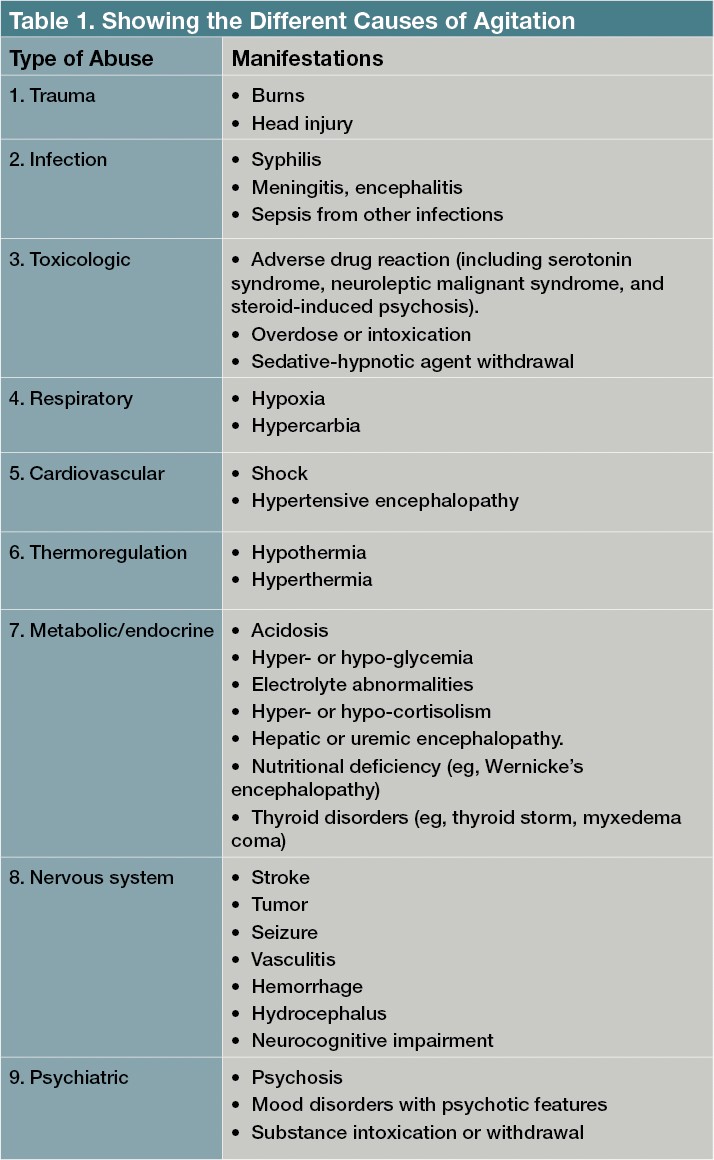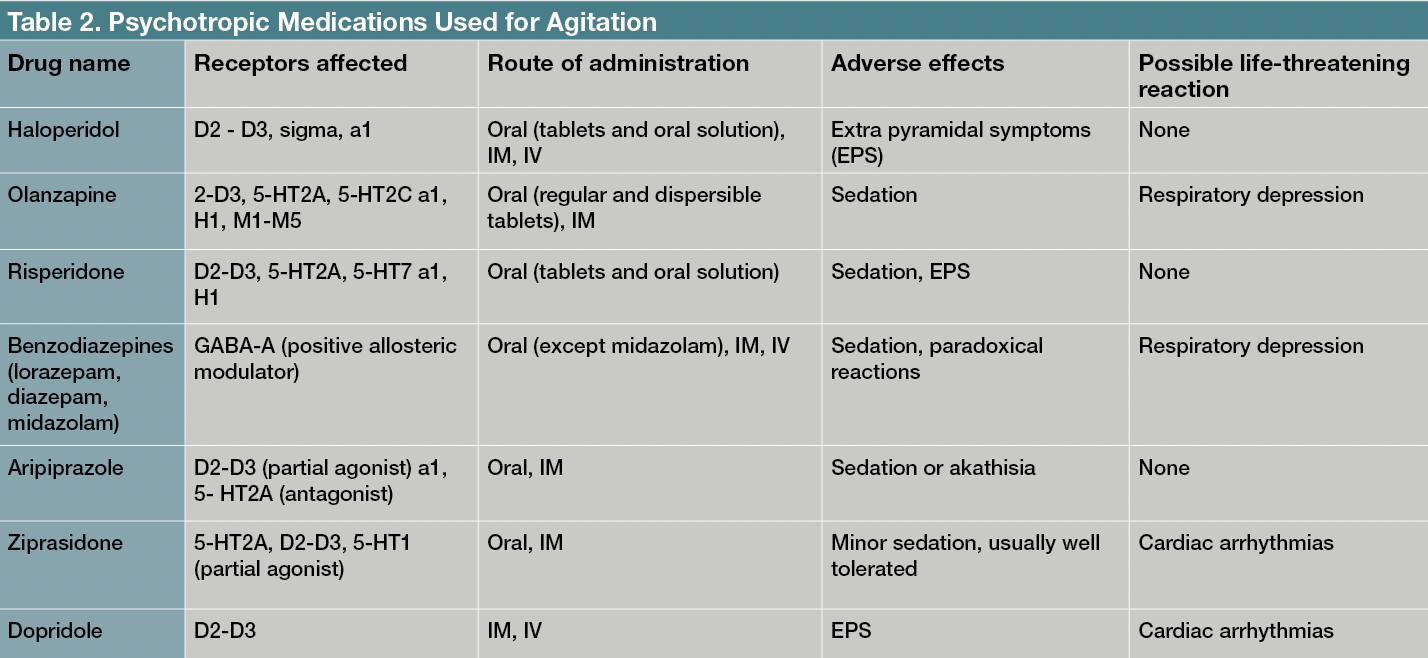“What Is Happening to My Wife?”
Agitation, possibly leading to aggression, is a major issue in emergency centers. Explore a case of agitation in the emergency department.
LIGHTFIELD STUDIOS/AdobeStock

TALES FROM THE CLINIC
-Series Editor Nidal Moukaddam, MD, PhD
In this instalment of Tales From the Clinic: The Art of Psychiatry, we discuss agitation and how it can mimic various psychiatric illnesses. Agitation, possibly leading to aggression, is a major issue in emergency centers. The role of psychiatry in acute settings, such as emergency departments (EDs) and consultation-liaison services, often entails managing agitation and diagnosing then managing underlying mental illness when applicable. This topic was chosen because of the pervasiveness of the issue, the severity of the impact of agitation (believed to cause burnout and turnover in staff and physicians), and the possibility of misdiagnosing an agitated patient with mental illness when the etiology, as in this case, is in fact medical.
Case Study
“Mr Luis” brought his wife to the ED, expressing deep concern for abrupt changes in her behavior. He explained that she had been missing for a day and returned at 5 AM, completely naked except for a coat, which was not even hers. Despite being relieved that she was alive, he was terrified by her state and was worried that she might have been sexually assaulted. His wife, “Mrs Luis,” is a 61-year-old woman with schizophrenia who had been taking her medication as prescribed. However, she had recently babysat her friend's grandchildren and exhibited unusual behavior by being verbally abusive. She then fought with the child’s mother and left the house at 2 PM. When she did not return home by 5 PM as expected, her husband grew concerned and contacted the friend, who did not know her whereabouts. He filed a missing person report.
In the ED, Mrs Luis displayed signs of anxiety and agitation and was talking incessantly. She also claimed that her husband was not her husband but confirmed that she had been taking her medication as prescribed. Mrs Luis was placed in a psychiatric bed in the ED waiting for medical evaluation and psychiatric assessment. Meanwhile, a patient next to her experienced hallucinations and talked to herself. Mrs Luis became agitated and attempted to leave the room, but the nurse was able to redirect her. However, Mrs Luis’ agitation worsened, and she began to scream and insisted on leaving. Her nurse activated a security call, she was given medications on an emergency basis, and she was restrained in her bed until the medications took effect. Mrs Luis was found to have a urinary tract infection and required parenteral antibiotics. She was then admitted to the medical ward with no subsequent agitation.
Discussion
Aggressive behavior and agitation in psychiatric patients are significant challenges in the ED, where medical and traumatic emergencies are routinely managed, and time and space are scarce resources. The potential for escalation to aggressive behavior—which may put patients, staff, and providers at risk—makes it imperative to address agitated behavior rapidly and efficiently. Time constraints and limited access to psychiatric support have pushed emergency providers to rely on emergency medications and physical restraints, a strategy previously referred to as “restrain and sedate,”1 though that term is no longer used or sanctioned.
Patients with borderline personality disorder displayed the highest aggression rate, reaching up to 73%, while patients with schizophrenia experienced agitation ranging from 10% to 45% during hospitalization.2,3 Patients with bipolar depression, on the other hand, exhibited aggression at a rate of 12.2%.4
A nationwide poll conducted by the American College of Emergency Physicians (ACEP) in 2018, which included over 3500 emergency physicians, revealed that almost half of them had experienced physical assaults while on the job, with 60% of these occurring within the past year. Furthermore, a 2016 survey of 119 emergency medicine residents indicated that 66% had been physically assaulted by patients, whereas only 16.8% had received prior training in violence prevention.5
Agitation affects patients with and without mental illness. It is easy to assume that agitation reflects a mental etiology, though it is often a nonspecific manifestation of disease.6 The evaluation of a patient's medical condition begins during the initial assessment, where they are assessed for red flags such as abnormal vital signs, trauma, and abnormal neurologic exam, which indicate life-threatening issues that require immediate attention.7 A more comprehensive evaluation is then conducted once it is safer to do so. Information from outside providers, bystanders, or significant others can be crucial in determining the cause of agitation. The most common life-threatening causes of acute agitation are listed in Table 1. The role of the psychiatry team is to assist in management and help elucidate etiology, as well as to guide psychotropic agent choices, especially in cases with underlying mental illness. A co-management, collaborative approach works best when both teams are involved since patient’s arrival.8
Table 1. Showing the Different Causes of Agitation

Assessing Agitation
The severity of agitation and risk of violence must also be determined using a validated tool to quantify the assessment. Predicting aggression and agitation among psychiatric patients in busy EDs is difficult. The utilization of violence risk prediction scores is crucial for decision making, but the process can be complicated.
There are several aggression/agitation scores that are currently available. While many of these scores have broad applicability, their usefulness in the ED setting may be limited. Furthermore, the number of scores that have been validated in the ED setting is quite small, and their effectiveness and impact on patients are still under study.
We will provide an overview of some established aggression prediction scores used in emergency settings. The Behavioral Activity Rating Scale (BARS)9 is one such score, developed by pharmaceutical companies to evaluate agitation in drug trials. It categorizes patients into 7 levels of agitation: unable to arouse, very sedated, sedated, calm, agitated, very agitated, and dangerous agitation. Although it has been recommended by "Best Practices for Evaluation and Treatment of Agitated Children and Adolescents" and is used to assess agitated patients in the emergency room, it has limitations, including a lack of proven effectiveness in reducing violent incidents, security activations, or the need for mechanical restraints.
The Brøset Violence Checklist (BVC)10 is a tool designed to predict short-term violence by assessing symptoms such as confusion, irritability, boisterousness, verbal threats, physical threats, and attacks on objects, which are rated as present or absent. The BVC has been further validated through its inclusion in an occupational violence and aggression recognition program implemented in an Australian ED. However, it should be noted that this validation was based on a single study conducted in a single health care system.
Computer vision is another promising tool that can be used for this purpose. It aims to equip computers with the ability to interpret and comprehend a visual world. One application is human activity recognition (HAR), which automatically identifies and analyzes human activities using data gathered from various types of sensors.11
Although there is no direct evidence suggesting that computer vision and cameras can predict aggression in patients, some related studies have used cameras and artificial intelligence to detect signs of aggression in hospitals.12 The system utilizes video cameras strategically placed in a hospital and employs artificial intelligence to detect indications of aggression. It then connects to the nurse call and alerting system to summon help in cases of conflict, potentially preventing injuries to the staff and other patients. Medications used to treat agitation range from sedatives/hypnotics to antipsychotics.13 Mechanism of action and possible adverse effects are presented in Table 2.
Table 2. Psychotropic Medications Used for Agitation

One of the major challenges is that psychiatric patients are labeled as disruptive or aggressive. Labels can be harmful and stigmatizing, and can lead to biased psychological labeling. This can lead to negative feelings toward the patient when the patient returns to the ED. Instead, it is important to focus on identifying the underlying cause of the behavior and addressing it appropriately. This can also lead to burnout in caregivers.
Concluding Thoughts
Agitated patients presenting to the ED can escalate to aggressive and violent behaviors with the potential for injury to themselves, the ED staff, and others. Agitation is a nonspecific symptom that may be caused by, or result in, life-threatening conditions. A standardized strategy to identify patients before agitation would allow this vulnerable population to be treated appropriately, while increasing the safety of the medical staff. The potential to assess the probability of a patient becoming agitated can be measured using objective risk scores, many of which are available. Although many of the scores have a wide range of applicability, they may have limited utility in the ED setting. Machine learning algorithms in conjunction with computer vision technology can identify indicators of aggression and promptly notify relevant personnel. Furthermore, computers are not prone to fatigue and can continuously monitor these behaviors.
Dr Mesbah is an assistant professor in emergency medicine at Baylor College of Medicine.
References
1. Caruso R, Antenora F, Riba M, et al. Aggressive behavior and psychiatric inpatients: a narrative review of the literature with a focus on the European experience. Curr Psychiatry Rep. 2021;23(5):29.
2. Newhill CE, Eack SM, Mulvey EP. Violent behavior in borderline personality. J Pers Disord. 2009;23(6):541-554.
3. Cornaggia CM, Beghi M, Pavone F, Barale F. Aggression in psychiatry wards: a systematic review. Psychiatry Res. 2011;189(1):10-20.
4. Corrigan PW, Watson AC. Findings from the National Comorbidity Survey on the frequency of violent behavior in individuals with psychiatric disorders. Psychiatry Res. 2005;136(2-3):153-162.
5. ACEP emergency department violence poll research results. Marketing General Inc. September 2018. Accessed January 30, 2024. https://www.emergencyphysicians.org/siteassets/files/pdfs/2018acep-emergency-department-violence-pollresults-2.pdf
6. Schnapp BH, Slovis BH, Shah AD, et al. Workplace violence and harassment against emergency medicine residents. West J Emerg Med. 2016;17(5):567-573.
7. Whelan T. The escalating trend of violence toward nurses. J Emerg Nurs. 2008;34(2):130-133.
8. Chapman R, Styles I. An epidemic of abuse and violence: nurse on the front line. Accid Emerg Nurs. 2006;14(4):245-249.
9. Howard OP, Ehrhard KA, Douglass AR, et al. Letter to the editor: impact of the Behavioral Activity Rating Scale (BARS) on antipsychotic use for acute agitation in an inpatient psychiatric setting. Gen Hosp Psychiatry. 2021;73:131-132.
10. Abderhalden C, Needham I, Miserez B, et al. Predicting inpatient violence in acute psychiatric wards using the Brøset-Violence-Checklist: a multicentre prospective cohort study. J Psychiatr Ment Health Nurs. 2004;11(4):422-427.
11. Zhang HB, Zhang YX, Zhong B, et al. A comprehensive survey of vision-based human action recognition methods. Sensors (Basel). 2019;19(5):1005.
12. Surek GAS, Seman LO, Stefenon SF, et al. Video-based human activity recognition using deep learning approaches. Sensors (Basel). 2023;23(14):6384.
13. Zareifopoulos N, Panayiotakopoulos G. Treatment options for acute agitation in psychiatric patients: theoretical and empirical evidence. Cureus. 2019;11(11):e6152.
